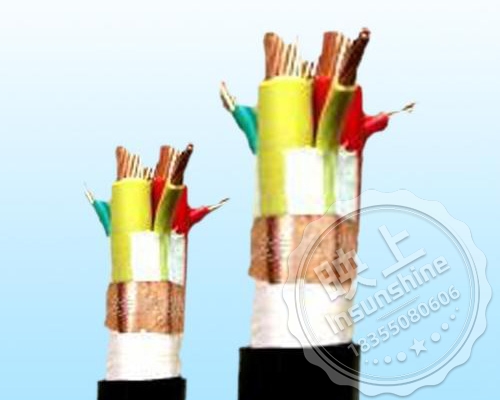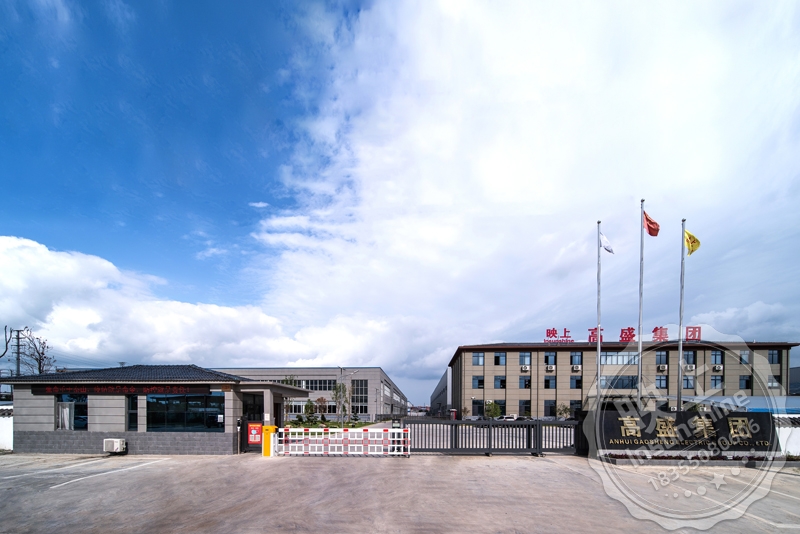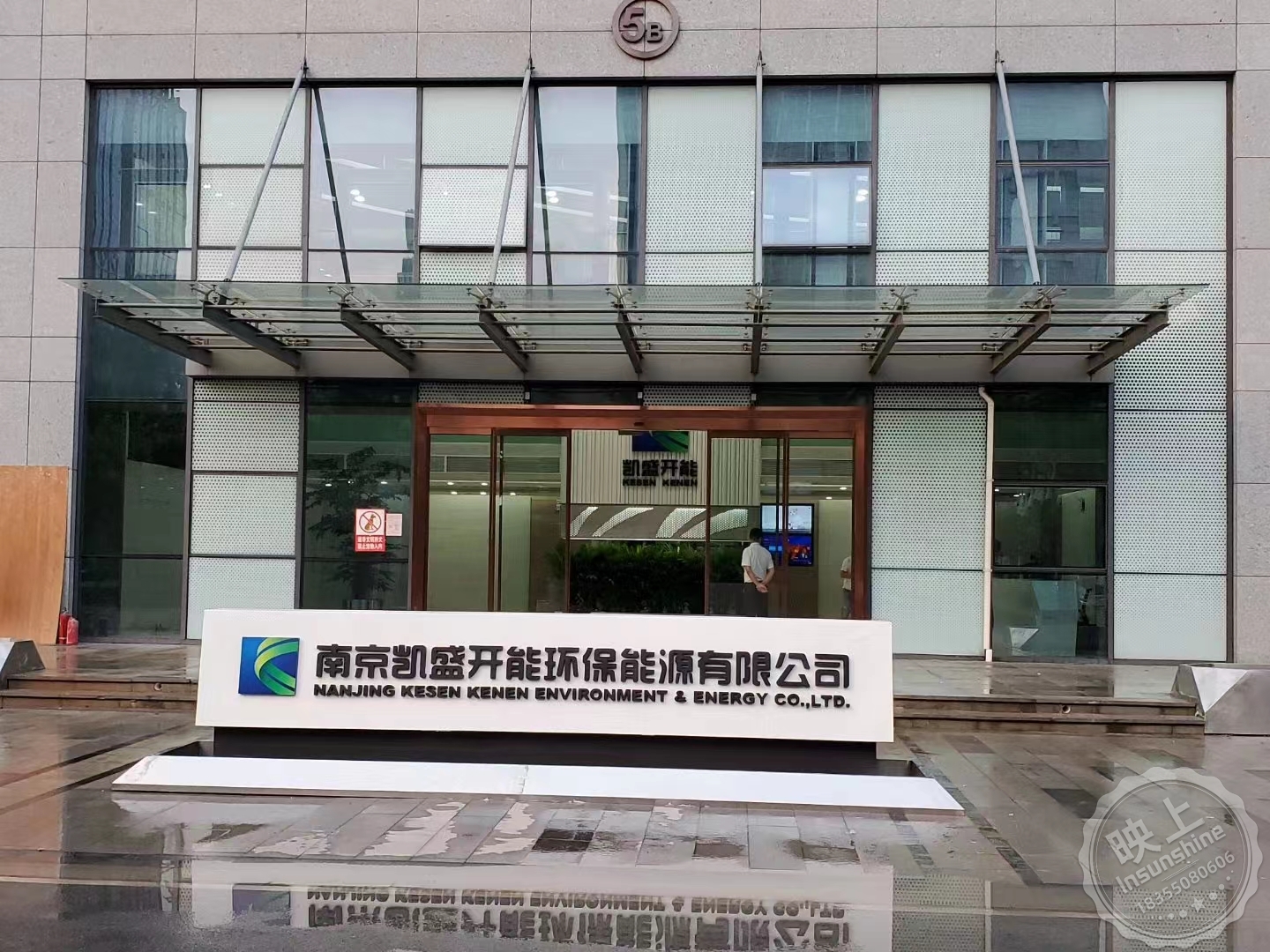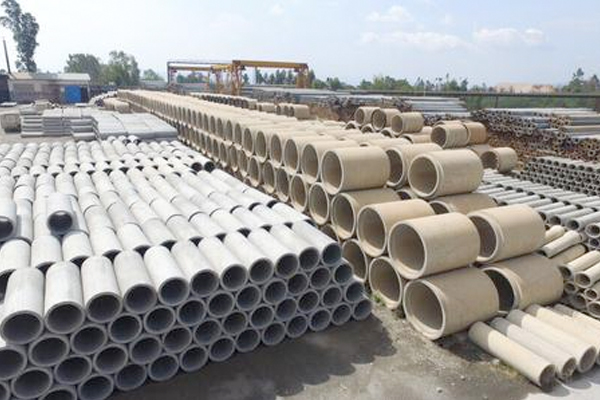
Copper wire shielded frequency converter dedicated power cable

Copper tape shielded frequency converter dedicated power cable

Structural diagram

Special high-temperature cable for frequency converter
Note: Our company can develop and customize various types and specifications of cables (including high-temperature resistant variable frequency cables) according to customer on-site requirements.
Contact phone number: Manager Chen 18355080606 (same WeChat account)
Standard and technical parameters for power cables of frequency converters
Rated voltage 1KV to 3KV frequency converter power cable
1 Scope
This standard specifies the product name, technical requirements, test methods, inspection rules, packaging, and transportation of power cables for frequency converters.
This standard is applicable to power cables for frequency converters with rated voltages of 0.6/1kV and 1.8/3kV (hereinafter referred to as frequency conversion cables).
2 Normative References
The clauses in the following documents become clauses of this standard by reference. Any referenced document marked with a date shall not be subject to any subsequent amendments (excluding errata) or revisions to this standard. However, parties to agreements based on this standard are encouraged to study whether the latest versions of these documents can be used. The latest version of any referenced document without a date is applicable to this standard.
GB/T 2900.10-2001 Electrotechnical Terminology - Cables (IEC 60050-461:2008, IDT)
GB/T 2951.11-2008 General test methods for insulation and sheathing materials of cables and optical cables - Part 11: General test methods - Measurement of thickness and external dimensions - Mechanical performance tests (IEC 60811-1-1:2001, IDT)
GB/T 2951.12-2008 General Test Methods for Insulation and Sheath Materials of Cables and Optical Cables Part 12: General Test Methods - Thermal Aging Test Method (IEC 60811-1-2:1985, IDT)
GB/T 2951.13-2008 General Test Methods for Insulation and Sheath Materials of Cables and Optical Cables Part 13: General Test Methods Density Determination Water Absorption Test Shrinkage Test (IEC 60811-1-3:2001, IDT)
GB/T 2951.21-2008 General test methods for insulation and sheathing materials of cables and optical cables Part 21: Test methods specific to elastomeric mixtures Ozone resistance test Thermal elongation test Mineral oil immersion test (IEC 60811-2-1:2001, IDT)
GB/T 2952.3-2008 Cable outer sheath Part 3: General outer sheath for non-metallic sheathed cables
GB/T 3048.4-2007 Test Methods for Electrical Properties of Wires and Cables Part 4: Direct Current Resistance Test of Conductors
GB/T 3048.5-2007 Test Methods for Electrical Properties of Wires and Cables Part 5: Insulation Resistance Test
GB/T 3048.8-2007 Test Methods for Electrical Properties of Wires and Cables Part 8: AC Voltage Test
(IEC 60060-1:1989,NEQ)
GB/T 3048.9-2007 Test Methods for Electrical Properties of Wires and Cables Part 9: Spark Test for Insulated Core
GB/T 3956-2008 Conductors of Cables (IEC 60228:2004, IDT)
GB/T 6995.3-2008 Identification Marking Method for Wires and Cables Part 3: Identification Marking for Wires and Cables
GB/T 6995.5-2008 Identification Marking Method for Wires and Cables Part 5: Identification Marking for Insulated Core of Power Cables
GB/T 12706.1-2008 extruded insulated power cables and accessories with rated voltage from 1kV (Um=1.2kV) to 35kV (Um=40.5kV) - Part 1: Cables with rated voltage of 1kV (Um=1.2kV) and 3kV (Um=3.6kV)
GB/T 17737.1-2000 Radio frequency cables - Part 1: General specifications - General principles, definitions, requirements and test methods (IEC 61196-1:2005, IDT)
GB/T 19666-2005 General rules for flame-retardant and fire-resistant wires and cables
JB/T 8137-1999 Wire and Cable Delivery Tray
JB/T 10696.7-2007 Test methods for mechanical and physicochemical properties of wires and cables Part 7: Tear resistance test
3 Definitions
This standard adopts GB/T 2900.10 and the following definitions.
3.1 Rated voltage
The rated voltage of a cable is the reference voltage used for cable design, use, and electrical performance testing.
The rated voltage is expressed in U0/U and is measured in kV.
U0 represents the effective voltage value between any main insulated conductor and "ground" (metal shield, metal sheath, or surrounding medium); U is the effective voltage between any two conductors in a multi-core or single core cable system.
In the communication system, the rated voltage of the cable should be at least equal to the nominal voltage of the system using the cable, and this condition applies to both U0 and U values; In a DC system, the nominal voltage of the system should not exceed 1.5 times the rated voltage of the cable.
The operating voltage of the system should not exceed 1.1 times the rated voltage of the system.
3.2 Batch
Batch refers to the quantity of products of the same model and specification ordered at once. If there are products of different models and specifications in a single order, the different models and specifications should be considered as different batches.
3.3 Definition of Experiments
3.3.1 Routine tests (symbol R)
The test conducted by the manufacturer on all manufactured lengths of the finished cable to verify whether all cables meet the specified requirements.
3.3.2 Sample tests (symbol S)
A test conducted by the manufacturer at a specified frequency on finished cable samples or on certain components taken from finished cables to verify whether the cable meets the specified requirements.
3.3.3 Type tests (symbol T)
The test conducted on a type of cable included in this specification before supply, in accordance with general commercial principles, to demonstrate that the cable has good performance that can meet the expected usage conditions. The characteristic of this experiment is that unless there are changes in cable material, design, or manufacturing process that may alter the characteristics of the cable, there is no need to redo the experiment after it has been conducted.
4 Cable models and product representation methods
4.1 Code
4.1.1 Product series code
Inverter cable BP
4.1.2 Conductor code
Type 1 single stranded conductor (can be omitted)
Type 2 7-conductor soft structure (B)
Class 5 conductor (soft structure) R
4.1.3 Insulation code
Cross linked polyethylene/polyolefin YJ
Silicone rubber G
Ethylene propylene rubber insulation E
Polyvinyl chloride V
4.1.4 Sheath code (including extruded inner lining and isolation sleeve, etc.)
Polyethylene/Polyolefin Y
Cross linked polyolefin YJ
Silicone rubber G
Low smoke halogen-free polyolefin sheath E
Polyvinyl chloride V
ZA (Class A flame retardant), ZB (Class B flame retardant), ZC (Class C flame retardant), ZR (flame retardant)
Low smoke halogen-free flame retardant WDZ
4.1.5 Metal shielding code
Copper wire sparse winding SP
Copper wire weaving P
Tin plated copper wire weaving P1
Copper strip P2
Aluminum plastic composite tape wrapping P3
Copper wire braided copper tape wrapped shielding PP2
4.1.6 Code for Metal Armor
Double steel belt armor 22
Thin round steel wire loosely wound armor 32
Coarse round steel wire loosely wound armor 42
Galvanized steel wire braided armor 92
PVC sheath V
Polyethylene outer sheath 3
4.2 Representation Method
The product is represented by model, specification, and this standard number.
The composition and arrangement sequence of product models are shown in Figure 1.
A
a) Copper core cross-linked polyethylene insulated copper wire braided shielding polyvinyl chloride sheathed frequency converter cable, rated voltage 0.6/1kV, 3+3 cores, nominal cross-section 16mm2, neutral wire cross-section 4mm2 expressed as:
BPYJVP-0.6/1kV 3×16+3×4 mm2
b) Copper core cross-linked polyethylene insulated copper tape wrapped shielding polyolefin sheath low smoke halogen-free flame retardant frequency converter cable, rated voltage of 0.6/1kV, 3+3 cores, nominal cross-section of 95mm2, neutral wire cross-section of 16mm2 expressed as:
WDZ-BPYJYP2 - 0.6/1kV 3×95+3×16 mm2
Table 1
c) Copper core ethylene propylene rubber insulated copper wire braided shielding silicone rubber sheathed frequency converter cable, rated voltage 0.6/1kV, 3+3 cores, nominal cross-section 150mm2, neutral wire cross-section 25mm2 expressed as:
BPEGP-0.6/1kV 3×150+3×25 mm2
d) Copper core silicone rubber insulated copper tape wrapped shielded silicone rubber sheathed frequency converter cable, rated voltage 1.8/3kV, 3rd class core, nominal cross-section 240mm2, neutral wire cross-section 50mm2 expressed as:
BPGGP2-1.8/3kV 3×240 mm2
4.3 Common Cable Model Names
Common cable model names are shown in Table 1
|
Model |
Name |
|
BPGG |
Silicone rubber insulated and sheathed copper wire braided shielding high temperature resistant variable frequency power cable. |
|
BPGGP2 |
Silicone rubber insulated and sheathed copper tape wrapped shielding high temperature resistant variable frequency power cable. |
|
BPGGPP2 |
Silicone rubber insulated and sheathed copper wire braided copper tape wrapped shielding high temperature resistant variable frequency power cable. |
|
BPGGP3 |
Silicone rubber insulated and sheathed aluminum polyester composite film wrapped shielding high temperature resistant variable frequency power cable. |
|
BPGVFP |
Silicone rubber insulated nitrile sheathed copper wire braided shielding high temperature resistant variable frequency power cable. |
|
BPGVFP2 |
Silicone rubber insulated nitrile sheathed copper tape wrapped shielding high temperature resistant variable frequency power cable. |
|
BPGVFPP2 |
Silicone rubber insulated nitrile sheathed copper wire braided copper tape wrapped shielding high temperature resistant variable frequency power cable. |
|
BPGVFP3 |
Silicone rubber insulated nitrile sheathed aluminum polyester composite film wrapped shielding high temperature resistant variable frequency power cable. |
|
BPFFP |
Fluorine 46 insulated and sheathed copper wire braid shielded high temperature resistant inverter power cable. |
|
BPFFP2 |
Fluorine-46 insulated and sheathed copper tape wrapped shielding high temperature resistant variable frequency power cable. |
|
BPFFPP2 |
Fluorine-46 insulated and sheathed copper wire braided copper tape wrapped shielding high temperature resistant variable frequency power cable |
|
BPFFP3 |
Fluorine-46 insulated and sheathed aluminum polyester composite film wrapped shielding high temperature resistant variable frequency power cable. |
|
BPVVP |
PVC insulated and sheathed copper wire braided shielded variable frequency power cable. |
|
BPVVP2 |
PVC insulated and sheathed copper tape wrapped shielded variable frequency power cable. |
|
BPVVPP2 |
PVC insulated and sheathed copper wire braided copper tape wrapped shielded variable frequency power cable. |
|
BPVVP3 |
PVC insulated and sheathed aluminum polyester composite film wrapped shielded variable frequency power cable. |
|
BPYJVP |
Cross linked polyethylene insulated polyvinyl chloride sheathed copper wire braided shielded variable frequency power cable. |
|
BPYJVP2 |
Cross linked polyethylene insulated polyvinyl chloride sheathed copper tape wrapped shielded variable frequency power cable. |
|
BPYJVPP2 |
Cross linked polyethylene insulated polyvinyl chloride sheathed copper wire braided copper tape wrapped shielded variable frequency power cable. |
|
BPYJVP3 |
Cross linked polyethylene insulated polyvinyl chloride sheathed copper wire braided copper tape wrapped shielded variable frequency power cable. |
Note: Copper wire in the conductor core can be tinned with P1, ZR can be added in front of flame-retardant cable models, and R can be added to flexible structure cables.
4.4 Cable specifications
The cable specifications are shown in Table 2. Main core cross-section
|
model |
CORE |
Nominal cross-sectionmm2 |
|
All models |
3+3 3+1 1 |
4,6,10,16,25,35,50,70,95, 120,150,185,240 |
Grounding wire core cross-section
|
Main core nominal cross-sectionmm2 |
Nominal cross-section of the coremm2 |
|
4 |
1(0.75) |
|
6 |
1.5(1) |
|
10 |
2.5(1.5) |
|
16, 25 |
4(2.5) |
|
35 |
6 |
|
50, 70 |
10 |
|
95 |
16 |
|
120, 150 |
25 |
|
185 |
35 |
|
240 |
50(35) |
technical requirement
4.5 Materials
4.5.1 Insulation mixture
The insulation mixtures and their codes involved in this standard, as well as the maximum temperature of the conductors, are listed in Table 3.
1) Insulation mixture
|
Insulation mixture |
代号 |
Maximum temperature of conductor/℃ |
|
|
During normal operation |
During short circuit (maximum duration of 5 seconds) |
||
|
XLPE |
PVC/A |
70 |
160 |
|
EPDM |
XLPE |
90 |
250 |
|
Silicone rubber insulation |
EPR |
90 |
250 |
|
Fluoroplastic |
G |
180 |
350 |
|
Fluoroplastic |
F |
200 |
360 |
|
Difluoroplastic |
F4 |
125 |
250 |
4.5.2 Sheath mixture
The maximum temperature of conductors with different types of sheath mixtures in this standard is listed in Table 4.
2) Maximum conductor temperature of different types of sheathed composite cables
|
Sheath mixture |
code |
Maximum temperature of conductor during normal operation/℃ |
|
Polyvinyl chloride |
ST1 |
80 |
|
ST2 |
90 |
|
|
polyethylene |
ST3 |
80 |
|
ST7 |
90 |
|
|
Halogen-free flame retardant material |
ST8 |
90 |
|
Elastic materials (TPE, TPU, chlorinated polyethylene, etc.) |
SE1 |
85 |
|
silicon rubber |
G |
180 |
4.6 Conductor
4.6.1 The conductor shall comply with the first or second type of bare annealed copper conductor or metal coated annealed copper conductor in GB/T 3956, or the fifth type of bare copper conductor or metal coated annealed copper conductor.
4.6.2 The surface of the conductor should be smooth, free of burrs, sharp edges, and protruding or broken single wires that damage the shielding and insulation. The DC resistance of the conductor at 20 ℃ shall comply with the provisions of GB/T 3956.
4.6.3 Non hygroscopic tape is allowed to be used for overlapping wrapping or longitudinal wrapping on the surface of the conductor, and the performance of the tape is not assessed.
4.7 Insulation
4.7.1 The insulation material should be one of the extruded solid media listed in Table 3. The mechanical and physical properties of polyvinyl chloride insulation, cross-linked polyethylene insulation, and ethylene propylene rubber insulation shall comply with the provisions of GB/T 12706.1; The mechanical and physical properties of silicone rubber insulation and cross-linked polyolefin insulation comply with the provisions of Table A.1 and Table A.4 in Appendix A.
4.7.2 The nominal value of insulation thickness shall comply with the provisions of Tables 5 to 6. The average insulation thickness should not be less than the nominal value, and the thickness at the thinnest part of the insulation should not be less than 90% -0.1mm of the nominal value.
4.7.3 The insulation should be tightly extruded onto the conductor, with no visible bubbles or impurities in the cross-section, a round appearance, and easy detachment from the conductor.
4.7.4 The insulated wire core shall undergo the power frequency spark test specified in Table 7 as an intermediate inspection in accordance with GB/T 3048.
4.7.5 The identification marks for the main core and neutral core are consistent and can be identified using numbers, color bands, or colors, all in accordance with GB/T 6995. However, they can also be determined through consultation with the user or based on user requirements.
3)Insulation Thickness
|
Nominal cross-section mm2 |
Insulation nominal thickness at rated voltage U0/U (Um)/mm |
|||
|
Nominal thickness of insulation for ethylene propylene rubber and silicone rubber |
Cross linked polyethylene insulation thickness |
|||
|
0.6/1(1.2)kV |
1.8/3(3.6)kV |
0.6/1(1.2)kV |
1.8/3(3.6)kV |
|
|
0.75,1.0,1.5,2.5 |
1.0 |
— |
0.7 |
— |
|
4,6 |
1.0 |
— |
0.7 |
— |
|
10,16 |
1.0 |
2.2 |
0.7 |
2.0 |
|
25,35 |
1.2 |
2.2 |
0.9 |
2.0 |
|
50 |
1.4 |
2.2 |
1.0 |
2.0 |
|
70,95 |
1.6 |
2.4 |
1.1 |
2.0 |
|
120 |
1.6 |
2.4 |
1.2 |
2.0 |
|
150 |
1.8 |
2.4 |
1.4 |
2.0 |
|
185 |
2.0 |
2.4 |
1.6 |
2.0 |
|
240 |
2.2 |
2.4 |
1.7 |
2.0 |
|
300 |
2.4 |
2.4 |
1.8 |
2.0 |
4)Insulation Thickness
|
Nominal cross-section mm2 |
Insulation nominal thickness/m at rated voltage U0/U (Um) |
|
|
Insulation nominal thickness/m at rated voltage U0/U (Um) |
||
|
0.6/1(1.2)kV |
1.8/3(3.6)kV |
|
|
0.75,1.0 |
0.8 |
— |
|
1.5,2.5 |
0.8 |
— |
|
4,6 |
1.0 |
— |
|
10,16 |
1.0 |
2.2 |
|
25,35 |
1.2 |
2.2 |
|
50 |
1.4 |
2.2 |
|
70 |
1.4 |
2.2 |
|
95 |
1.6 |
2.4 |
|
120 |
1.6 |
2.4 |
|
150 |
1.8 |
2.4 |
|
185 |
2.0 |
2.4 |
|
240 |
2.2 |
2.4 |
|
300 |
2.4 |
2.4 |
5) Spark test voltage
|
Insulation nominal thickness/mm |
Test voltage/kV |
|
0.5<δ≤1.0 |
6 |
|
1.0<δ≤1.5 |
10 |
|
1.5<δ≤2.0 |
15 |
|
2.0<δ≤2.5 |
20 |
|
2.5<δ |
25 |
4.8 Cable Core and Filler
4.8.1 Cable Core
4.8.1.1 The cable core is divided into a 3-level structure and a 3+3 (3 main cores and 3 auxiliary cores) structure. The insulated core should be twisted into a cable in the right direction. The twisted pitch of hard structure cables should not exceed 40 times the twisted outer diameter, and the twisted pitch of soft structure cables should not exceed 20 times the twisted outer diameter.
4.8.1.2 When arranging the 3+3 structure wire cores, the color sequence of the main insulation wire cores should be followed to ensure that the grounding wire cores are located in the gap between adjacent main wire cores.
4.8.1.3 The gap between cable insulation cores is allowed to be filled tightly with suitable materials that are compatible with the cable insulation material and suitable for the operating temperature of the cable.
4.8.2 After the cable core is formed, it is allowed to tie it tightly with suitable straps.
4.8.3 For cables without extruded inner lining, it is allowed to wrap two layers of polyester tape with an overlap rate of not less than 50% after cable formation, but the performance of the polyester tape may not be assessed.
4.8.4 Metal armored, concentric conductor, and metal shielded multi-core cables should have an inner cushion layer extruded on the cable core.
4.9 Inner lining layer
4.9.1 The inner lining layer shall be extruded or wrapped.
4.9.2 The material used for the inner lining layer should be suitable for the operating temperature of the cable and compatible with the cable insulation material.
The approximate thickness of the extruded inner lining layer should be selected from Table 8 (the assumed diameter required for calculation is based on Appendix A of GB/T 12706.1 (standard appendix), calculated as three cores, the same below).
When the diameter of the cable core is assumed to be 40mm or less, the approximate thickness of the inner lining layer wrapped around it is taken as 0.4mm; If it is greater than 40mm, take 0.6mm.
6) Thickness of extruded inner lining layer
|
Assuming cable core diameter/mm |
Approximate thickness of extruded inner lining layer/mm |
|
|
— |
≤25 |
1.0 |
|
>25 |
≤35 |
1.2 |
|
>35 |
≤45 |
1.4 |
|
>45 |
≤60 |
1.6 |
|
>60 |
≤80 |
1.8 |
|
>80 |
— |
2.0 |
4.10 Metal shielding layer
4.10.1 The cable must have a metal shielding layer, which includes structural types such as copper wire braided shielding, copper tape wrapped shielding, tin plated copper wire braided shielding, and copper wire braided and copper tape wrapped composite shielding. The core structure of the variable frequency cable is a third-order core, and the total cross-section during total shielding should not be less than the cross-section of the neutral core.
4.10.2 Braided shielding
4.10.2.1 Braided wire diameter
Regardless of the metal used, the nominal diameter of the braided wire shall comply with the provisions of Table 9:
7) Nominal diameter of round braided metal wire
|
Assuming diameter d/mm before armor |
Armored round metal wire nominal diameter/mm |
|
d≤10 10<d≤30 d>30 |
0.15 0.20 0.30 |
4.10.2.2 Weaving density
The weaving density of copper wire braided shielding should not be less than 80%.
The weaving density of the weaving layer is calculated according to formula 1
P=(2p-p2)×100 ……………………(1)
In equation (1): P - weaving density of the weaving layer,%
P - Unidirectional coverage coefficient
In equation (2): D - the pitch diameter of the weaving layer, mm;
D - diameter of the braided wire, mm;
M - the number of spindles in the same direction of the weaving machine;
N - the number of braided wires per ingot (the average number of braided wires between the upper and lower ingots when the strands are different);
L - weaving pitch, mm;
4.10.3 Copper tape winding adopts single-layer overlapping winding, with an overlap rate of not less than 15% and a copper tape thickness of not less than 0.1mm.
4.10.4 Copper wire winding for overall shielding, the spacing between copper wires should not be less than 4mm, and thin copper tape or tape gaps can be used to wrap and tie tightly outside the shielding. The DC resistance of shielded copper wire shall comply with the provisions of GB/T 3956.
4.10.5 An inner cushion layer is allowed between the shielding and the cable core.
4.11 Metal Armor
4.11.1 Metal armor types include flat metal wire armor, round metal wire armor, and bimetallic strip armor. It is allowed to use galvanized steel wire or copper wire braided armor for cables with a conductor cross-section not exceeding 6mm2, as agreed upon by the manufacturer and the purchaser.
4.11.2 Materials
Flat metal wire or round metal wire should be galvanized steel wire, copper wire or tin plated copper wire, aluminum or aluminum alloy wire.
The metal strip shall be steel strip, galvanized steel strip, aluminum or aluminum alloy strip, and the steel strip shall be hot-rolled or cold-rolled steel strip with recognized commercial quality.
4.11.3 Isolation sleeve
When the metal layer under the armor is different from the armor material, a protective sheath must be extruded using one of the materials specified in Table 4 to separate them. The nominal thickness Ts (in mm) of the extruded isolation sleeve should be calculated according to the following formula:
Ts=0.02 Du+0.6
In the formula, Du represents the assumed diameter before squeezing the isolation sleeve, mm。
4.11.4 Relationship between Cable Diameter and Armor Layer Size
The nominal diameter of round armored metal wire and the nominal thickness of armored metal strip should not be less than the values specified in Table 10 and Table 11, respectively.
8) Nominal diameter of round armored metal wire
|
Assuming diameter before armor mm |
Armored metal wire nominal diameter mm |
|
d≤10 10<d≤15 15<d≤25 25<d≤35 35<d≤60 60<d |
0.8 1.25 1.6 2.0 2.5 3.15 |
9) Armored metal strip nominal thickness
|
Assuming diameter before armor/mm |
Metal strip nominal thickness/mm |
|
|
Steel strip or galvanized steel strip |
Aluminum or aluminum alloy strip |
|
|
d≤30 30<d≤70 70<d |
0.2 0.5 0.8 |
0.5 0.5 0.8 |
For cables with a diameter greater than 15mm before armor, the nominal thickness of the flat metal wire should be taken as 0.8mm. When assuming a cable diameter of 15mm or less, flat metal wire armor should not be used.
4.11.5 Round or flat metal wire armor
The metal wire armor should be tight, even if the gap between adjacent metal wires is minimal. If necessary, a galvanized steel wire with a minimum nominal thickness of 0.3mm can be loosely wound around the flat metal wire armor and round metal wire armor.
4.11.6 Bimetallic tape armor
The metal strip armor should be wrapped in two layers in a spiral, with the middle of the outer metal strip roughly above the gap between the inner metal strips, and the gap between the wrapped strips should not exceed 50% of the width of the metal strip.
4.11.7 The size of armored metal wire and metal strip shall not exceed the nominal size specified in 5.6.4 by more than:
——Round metal wire: 5%;
——Flat metal wire: 8%;
——Metal strip: 10%.
4.12 Outer sheath
4.12.1 All cables shall have an outer sheath. The outer sheath is usually black, and if the manufacturer and purchaser reach an agreement, it is allowed to use non black to adapt to the specific conditions of cable use.
4.12.2 The outer sheath material should be compatible with the cable operating temperature specified in Table 4. The performance of PVC sheath material complies with the provisions of GB/T 12706.1, and the performance of other sheaths complies with the provisions of Appendix A. The outer sheath used under special conditions (such as to prevent rodents and ants) can be supplemented with chemical additives in the formula. But these additives are harmless to humans and the environment.
4.12.3 Thickness
The nominal thickness value Ts (in mm) of the extruded sheath should be calculated according to the following formula:
PVC sheath TS=0.035D+1.0
Silicone rubber outer sheath TS=0.040D+1.2
In the formula: D - the assumed diameter before squeezing the isolation sleeve, mm。
The value calculated by the above formula should be rounded to approximately 0.1mm.
For unarmored cables and cables with sheaths not directly wrapped on armor, the nominal thickness of the sheath for single core cables should not be less than 1.4mm, and for multi-core cables, the nominal thickness of the sheath should not be less than 1.8mm.
The nominal thickness of the sheath for cables directly wrapped around armor should not be less than 1.8mm.
The average thickness measurement of the outer sheath (such as extruded inner lining, metal sheath or insulation) wrapped on the surface of a smooth cylinder should not be less than the specified nominal thickness, and the minimum measurement value should not be less than 85% -0.1mm of the specified nominal value. The minimum measured value of the thickness of the sheath (such as the sheath of an unarmored multi-core cable without an inner lining layer: squeezed into the cable core gap, or directly wrapped on the armor, metal shield, or concentric conductor sheath) and isolation sheath wrapped on the surface of an irregular cylinder should not be less than 80% -0.2mm of the specified nominal value.
4.12.4 The sheath should have a smooth, round surface, and consistent color. The cross-section should be free of visible bubbles and impurities, and other materials should comply with the provisions of GB/T 2952.
5 Finished cables
5.1 Structural dimensions
5.1.1 The conductor structure of finished cables shall comply with the provisions of Article 5.2.1 of this standard.
5.1.2 The insulation thickness of finished cables shall comply with the provisions of Article 5.3.2 of this standard.
5.1.3 Finished cable cabling shall comply with the provisions of Article 5.4.1 of this standard.
5.1.4 The thickness of the inner lining layer of the finished cable shall comply with the provisions of Article 5.5.3 of this standard.
5.1.5 The total shielding layer of the finished cable shall comply with the provisions of Article 5.6 of this standard.
5.1.6 The metal armor of finished cables shall comply with the provisions of Article 5.7 of this standard.
5.1.7 The thickness of the finished cable sheath shall comply with the provisions of Article 5.8 of this standard.
5.2 Electrical Performance
5.2.1 The DC resistance of the finished cable conductor shall comply with the provisions of Article 5.2.2 of this standard.
5.2.2 The insulation resistance of finished cables shall comply with the provisions of Table 12.
10)insulation resistance
|
rated voltage |
Cable specifications |
Insulation resistance at 20 ℃/M Ω· km |
Insulation resistance at working temperature/M Ω· km |
|
0.6/1kV |
35mm2及以下 |
150 |
0.15 |
|
50~150mm2 |
100 |
0.10 |
|
|
185~400mm2 |
80 |
0.08 |
|
|
1.8/3kV |
35mm2及以下 |
250 |
0.25 |
|
50~150mm2 |
200 |
0.20 |
|
|
185~400mm2 |
150 |
0.15 |
|
|
|
|
|
|
Basic cable specifications and structural parameters
|
Core * nominal cross-section (mm2) |
Conductor structure (Number of roots * diameter) mm
|
Maximum outer diameter of cable (mm) |
|
|
BPVVPP2 BPYJVPP2 |
BPGGPP2 |
||
|
3*4 |
1/2.26 |
13.5 |
15.5 |
|
3*6 |
1/2.78 |
14..0 |
16.0 |
|
3*10 |
7/1.35 |
19.0 |
21.0 |
|
3*16 |
7/1.70 |
22.0 |
24.0 |
|
3*25 |
7/2.15 |
25.0 |
26.5 |
|
3*35 |
7/2.52 |
26.0 |
35.5 |
|
3*50 |
10/2.52 |
28.5 |
40.0 |
|
3*70 |
14/2.52 |
31.5 |
43.5 |
|
3*95 |
19/2.52 |
36.5 |
50.0 |
|
3*120 |
24/2.52 |
40.0 |
56.0 |
|
3*150 |
30/2.52 |
45.0 |
60.0 |
|
3*185 |
37/2.52 |
47.0 |
67.0 |
|
3*4+3*0.75 |
1/2.26 |
14.5 |
16.5 |
|
3*6+3*1 |
1/2.78 |
15.0 |
17.0 |
|
3*10+3*2.5 |
7/1.35 |
20.8 |
22.0 |
|
3*16+3*2.5 |
7/1.70 |
23.0 |
25.0 |
|
3*25+3*4 |
7/2.15 |
28.0 |
27.5 |
|
3*35+3*6 |
7/2.52 |
32.0 |
36.5 |
|
3*50+3*10 |
10/2.52 |
37.0 |
41.0 |
|
3*70+3*10 |
14/2.52 |
41.6 |
44.5 |
|
3*95+3*16 |
19/2.52 |
47.0 |
51.0 |
|
3*120+3*25 |
24/2.52 |
50.1 |
57.0 |
|
3*150+3*25 |
30/2.52 |
52.0 |
61.0 |
|
3*185+3*35 |
37/2.52 |
58.5 |
68.0 |
Product Structure Diagram
5.2.3
5.2.4 Voltage withstand test of finished cables
The finished cable should be able to withstand the power frequency withstand voltage test specified in Table 13 for 5 minutes without breakdown.
11) Finished product withstand voltage test voltage
|
/kV |
kV |
|
0.6/1 |
3.5 |
|
1.8/3 |
6.5 |
Product Structure Diagram
5.2.3
5.2.4 Voltage withstand test of finished cables
The finished cable should be able to withstand the power frequency withstand voltage test specified in Table 13 for 5 minutes without breakdown.
11) Finished product withstand voltage test voltage
8 Packaging, transportation, and storage
8.1 Packaging
The cables should be properly packaged and delivered on cable reels that comply with the requirements of JB/T 8137. The cable end should be reliably sealed, and a protective cover should be added to the cable end extending outside the tray. The length of the extension should not be less than 300mm. Short cables weighing no more than 80kg can be packaged in loops. To prevent damage during storage and transportation, palletized products should also be equipped with appropriate protection. The circular packaging should be wrapped in multiple layers of strip material with a certain strength and firmly tied. Each cable end is well sealed with a heat shrink cap.
8.2 Transportation
Cable transportation should not keep the cable reel in a flat position; Long distance rolling is not allowed; Shall not be subjected to impact, compression, or any mechanical damage; Long distance transportation should prevent prolonged exposure to sunlight.
8.3 Each cable reel will be labeled with the following information:
a) Manufacturer;
b) Cable model, specification, and voltage level;
c) Cable length, net weight, and total weight;
d) Manufacturing year and month.
e) The arrow indicating the rolling direction of the cable reel.
8.4 Quality Inspection Certificate
Each cable reel should be accompanied by a product quality inspection certificate from the manufacturer.
Appropriate tools should be used during cable loading and unloading to avoid damaging the cable. Good fixation should be carried out on transportation vehicles. Cables should be avoided from being stored outdoors as much as possible, and cable reels are not allowed to be laid flat.
When packing, the outer shell of the box should be marked with:
f) Manufacturer
g) Cable model, specification, and voltage level;
h) Cable length, net weight, and total weight;
i) Manufacturing year and month
j) Moisture proof and anti throwing signs.
12) Performance of finished cables
Appendix A (Normative Appendix)
Performance requirements for insulation and sheath materials
Table A.1 Non electrical Test Requirements for Insulating Rubber Materials
|
Serial Number |
Test items |
unit |
Mixture code |
test method |
||
|
G |
IE4 |
EPR |
||||
|
1 1.1 1.1.1 1.1.2 1.2 1.2.1
1.2.2
1.2.3
1.3 1.3.1
1.3.2
1.3.3
2 2.1
2.2
3 3.1
3.2 4 |
Tensile strength and elongation at break Delivery status and original performance Original value of tensile strength - minimum median value Original value of elongation at break - minimum median value Performance of air oven after aging Aging condition a, b ——Temperature ——Processing time Tensile strength after aging ——Minimum median value ——Maximum rate of change c Elongation at break after aging ——Minimum median value ——Maximum rate of change c Performance of air bombs after aging Aging condition a ——Temperature ——Processing time Tensile strength after aging ——Minimum median value ——Maximum rate of change c Elongation at break after aging ——Maximum rate of change c Thermal extension test Experimental conditions ——Temperature ——Processing time ——Mechanical stress Results ——Elongation under load, maximum value ——Elongation after cooling, maximum value Ozone resistance test Experimental conditions ——Test temperature ——Test time ——Ozone concentration Results Tear resistance test Minimum tear strength
|
N/mm2 %
℃ h
N/mm2 %
% %
℃ h
N/mm2 %
%
℃ min N/mm2
% %
℃ h %
N/mm |
5.0 150
200±2 10×24
4.0 —
120 —
— —
— —
—
200±3 15 0.20
175 25
— — —
4.0 |
5.0 200
100±2 7×24
4.2 ±25
200 ±25
127±2 40
— ±30
±30
200±3 15 0.20
100 25
25±2 24 0.025~0.030
无裂纹 |
4.2 200
135±2 7×24
— ±30
— ±30
— —
— —
—
250±3 15 0.20
175 15
25±2 24 0.025~0.030
无裂纹 |
GB/T 2951.11
GB/T 2951.12
GB/T 2951.12
GB/T 2951.21
GB/T 2951.21
JB/T 10696.7 |
|
IE4 insulation should have conductors or no more than 30% copper wire should be removed for aging.
Unless otherwise specified in the product specifications, the aging of rubber mixtures shall not be carried out using a forced air oven. During the arbitration test, a natural ventilation aging chamber must be used.
Change rate: The ratio of the difference between the median value after aging and the median value before aging to the median value before aging, expressed as a percentage.
|
||||||
Table A.2 Non electrical Test Requirements for Sheath Materials
|
Serial Number |
Test items |
unit |
Mixture code |
test method |
|||||
|
SE4 |
SH |
G |
TPU |
TPV-70 |
TPV-90 |
||||
|
1 1.1 1.1.1 1.1.2 1.2 1.2.1
1.2.2
1.2.3
1.3 1.3.1
1.3.2 1.3.3 2 2.1
2.2
3
4 4.1 4.2 5 5.1
5.2 6 6.1 6.2
7 7.1 7.2 |
Tensile strength and elongation at break
Delivery status and original performance
Original value of tensile strength - minimum median value
Original value of elongation at break - minimum median value
Performance of air oven after aging
ageing condition
——Temperature
——Processing time
Tensile strength after aging
——Minimum median value
——Maximum rate of change a
Elongation at break after aging
——Minimum median value
——Maximum rate of change a
Mechanical properties after immersion in mineral oil
Experimental conditions
——Oil temperature
——Oil immersion time
Maximum change rate of tensile strength after immersion in oil a
Maximum change rate of fracture elongation after immersion in oil a
Thermal extension test
Experimental conditions
——Temperature
——Processing time
——Mechanical stress
Results
——Elongation under load, maximum value
——Elongation after cooling, maximum value
Tear resistance test
Minimum tear strength
High temperature pressure test
——Temperature
——Median value of indentation/maximum average thickness
Anti cracking test
Experimental conditions
——Temperature
——Duration
Results
Low temperature tensile test
test temperature
Results
——Elongation without fracture, minimum value
low temperature impact test
test temperature
Results
|
N/mm2 %
℃ h
N/mm2 %
% %
℃ h % %
℃ min N/mm2
% %
N/mm
℃ %
℃ h
℃
%
℃ |
10.0 300
70±2 10×24
— -15b
250 -25b
100±2 24 ±40 ±40
200±3 15 0.20
175 25
5.0
— —
— —
-25±2c
30
-25±2c 无裂纹 |
10.0 250
120±2 7×24
— -30b
— -40b
100±2 24 -40b -40b
200±3 15 0.20
175 15
5.0
— —
— —
-25±2c
30
-25±2c 无裂纹 |
6.0 200
200±2 10×24
5.0 —
150 —
— — — —
200±3 15 0.20
175 25
5.0
— —
— —
-40±2c
30
-40±2c 无裂纹 |
20.0 300
110±2 7×24
— ±30
300 ±30
100±2 24 ±40 ±30
— — —
— —
—
100 50
150±3 1 无裂纹
-40±2c
30
-40±2c 无裂纹 |
10.0 300
100±2 7×24
10.0 ±25
300 ±25
100±2 24 -40b -40b
— — —
— —
—
80 50
150±3 1 无裂纹
-25±2c
30
-25±2c 无裂纹 |
10.0 300
135±2 7×24
10.0 ±25
300 ±25
100±2 24 -40b -40b
— — —
— —
—
90 50
150±3 1 无裂纹
-25±2c
30
-25±2c 无裂纹 |
GB/T 2951.11
GB/T 2951.12
GB/T 2951.21
GB/T 2951.21
JB/T 10696.7 GB/T 2951.31
GB/T 2951.31
GB/T 2951.14
GB/T 2951.14 |
|
Change rate: The ratio of the difference between the median value after aging and the median value before aging to the median value before aging, expressed as a percentage.
B does not specify a positive deviation.
If used in an environment with a minimum temperature of -40 ℃ (-55 ℃), the low-temperature test temperature should be -40 ℃ (-55 ℃) ± 2 ℃. If the user has other requirements for the minimum environmental adaptation temperature, the temperature test should be conducted according to the user's requirements.
|
|||||||||
Table A.3 Mechanical Performance Test Requirements for Halogen Free Low Smoke Polyolefin Sheath
Table A.4 Mechanical and Physical Properties of Cross linked Polyolefin Insulation and Sheath
|
Serial Number |
Test items |
unit |
Sheath mixture code |
Sheath mixture code |
test method |
|
|
XP0 |
XLPE |
HYJZ-90 |
||||
|
1 1.1 1.1.1 1.1.2 2 2.1
2.2
2.3
3 3.1
3.2 3.3 4 |
Tensile strength and elongation at break
Delivery status and original performance
Original value of tensile strength - minimum median value
Original value of elongation at break - minimum median value
Performance of air oven after aging
ageing condition
——Temperature
——Processing time
Tensile strength after aging
——Minimum median value
——Maximum rate of change
Elongation at break after aging
——Minimum median value
——Maximum rate of change
Thermal extension test
Experimental conditions
——Temperature
——Processing time
——Mechanical stress
——Elongation under load, maximum value
——Elongation after cooling, maximum value
brittle temperature
——Test temperature
——Maximum value of impact brittleness performance
|
N/mm2 %
℃ h
N/mm2 %
% %
℃ h N/cm2 % %
℃
|
12.5 250
135±2 7×24
— ±20
— ±20
200±3 15 20 80 5
-76 15/30 |
12.5 200
135±3 7×24
— ±25
— ±25
200±3 15 20 175 15
— — |
|
GB/T 2951.11
GB/T 2951.12
GB/T 2951.21
GB/T 5470
|



























